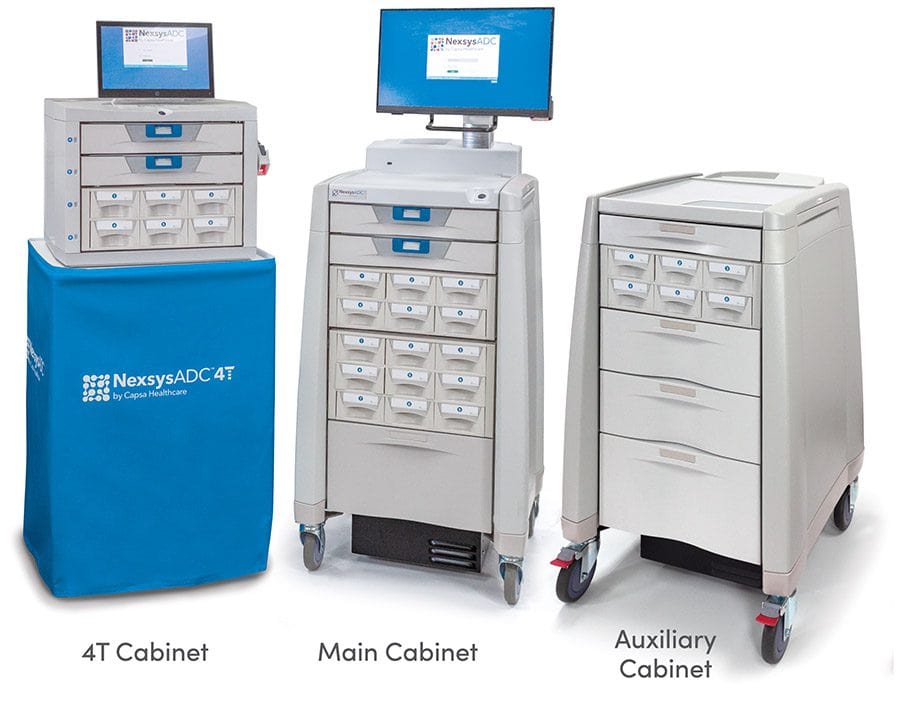When it comes to managing controlled medication doses in settings like long-term care homes, veterinary clinics, behavioral clinics, emergency medical services providers, and surgery centers, there are two levels of worry.
If controlled medication doses are being stored manually in a locked closet (with the keys probably still in the door) or a plastic tackle box and handwritten log, your level of worry will continue to spike. Mistakes will happen, it is just a matter of when and how serious. This is exactly why a “Track and Trace” medication management system is essential. We interviewed Jodie Vogt, Technology Services Manager at Capsa Healthcare, about what a “Track and Trace” system is.
An Automated Dispensing Cabinet (like Capsa’s NexsysADC) is the ideal Track and Trace system and forms the bedrock for a care facility’s due diligence. It is an all-in-one, closed environment. All sensitive medication doses are locked inside, and access is only by prior authorization. Every user, from restocking to pulling, is signed in. At any time, the pharmacy and the care facility management can see when a medication dose was dispensed, by which nurse or staffer, for which patient, what dosage, and full inventory. This may seem obvious, but a manual system like a tackle box or gun safe with a dog-eared 3-ring binder cannot do what technology does. The cabinet tracks everything!
“Something’s not right” – Management is suspicious that something is amiss (that red flag in your head since morphine dispensing seems to be a little higher lately). Or an upcoming audit will require deep exploration, a paper trail without holes, and hours of extra work. That is the Tracing part of a Track & Trace system. Tracing gets answers within seconds and eliminates leafing through old binders or notebooks for missing information. NexsysADC, for instance, has an entire library of available reports to pull up anything: Search by individual staff member, by medication, by date.

Vogt is one of the most passionate proponents of a Track and Trace system. “My favorite part is having all information readily available on reports. I can set the date parameters and get the information I am being asked for or need. I can take the information and filter it down to the nurse, patient and or medication name. All of my dispensing questions answered, right at my fingertips” she says.
So, should a care facility manager or pharmacy invest in an automated dispensing cabinet like NexsysADC, or is the status quo process good enough?
Of course, the discussion of Track and Trace focuses on the negatives with storing controlled medication doses. However, the discussion would not be complete without including the positives. An automated narc vault system like NexsysADC has an amazingly long list of benefits to nurses, techs, management and ultimately the patient:
